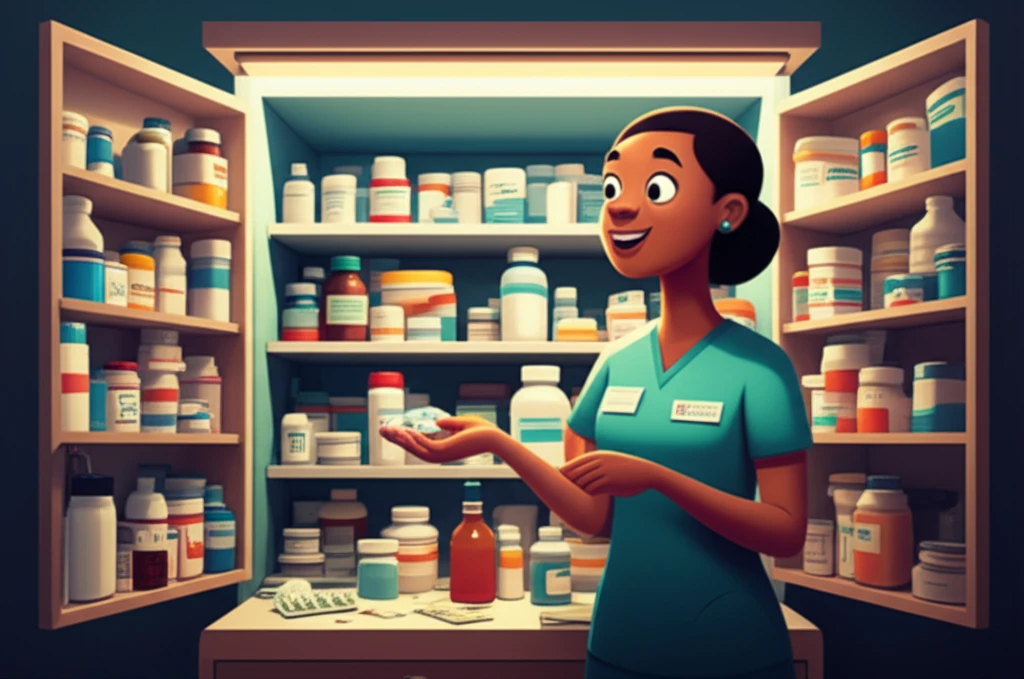
Is Your Medicine Cabinet a Health Hazard? How Community Health Workers Can Help
"Uncover the hidden dangers in your home medication storage and how a simple strategy can ensure your family's safety."
In the world of healthcare, the Family Health Strategy (FHS) stands as a critical approach, emphasizing teamwork among diverse professionals to promote health and prevent disease. Community Health Agents (CHAs) are central to this strategy, conducting vital educational activities in homes and communities. But going beyond the conventional focus on treating diseases, the FHS also involves understanding the complex dynamics within families, shaped by their environment and relationships. It is important to know the community's health profile to make health initiatives more relevant and effective.
One underestimated aspect is how families manage their medications at home. The Brazilian Ministry of Health recognizes this, aiming to transform CHAs into promoters of the rational use of medicines. This includes ensuring that medicines are of good quality and stored correctly to maintain their effectiveness.
Homes often accumulate medicines from past treatments, prescriptions for chronic conditions, and self-medication practices, all of which can pose significant health risks. Inappropriately stored medications can lead to irrational consumption, wastage, increased risk of accidental poisoning, and other toxic exposures. This article will explore findings from a study conducted in a city in Rio Grande do Sul, Brazil, to evaluate medication storage practices in communities served by the FHS.
The Reality of Home Medicine Storage: Key Findings

The study examined 473 households across five FHS areas, revealing that a significant 98.7% had at least one medication in stock. This confirms that keeping medicines at home is a widespread practice. Further analysis identified critical issues related to storage conditions:
- Exposure to Heat, Humidity, and Light: 43.5% of storage places exposed medicines to heat, 39.6% to humidity, and 16.5% to light.
- Accessibility to Children: In 42% of homes, medications were within reach of children, highlighting a significant risk of accidental ingestion.
- Expired Medications: 6.9% of the medicines had already expired, making them potentially harmful.
- Packaging and Information: A concerning 35.3% of medicines were not in their secondary packaging, and 67.9% lacked patient information leaflets.
- Exposure to Heat, Humidity, and Light: 43.5% of storage places exposed medicines to heat, 39.6% to humidity, and 16.5% to light.
- Accessibility to Children: In 42% of homes, medications were within reach of children, highlighting a significant risk of accidental ingestion.
- Expired Medications: 6.9% of the medicines had already expired, making them potentially harmful.
- Packaging and Information: A concerning 35.3% of medicines were not in their secondary packaging, and 67.9% lacked patient information leaflets.
The Path Forward: Empowering Communities for Safe Medication Practices
The study's findings underscore the urgent need for multi-professional teams to actively promote health and educate communities on the rational use and proper storage of medicines. Community Health Agents are invaluable in this effort. Their routine household visits enable them to identify and address issues related to medication storage and usage directly.
Given the high prevalence of self-medication and easy access to analgesics, CHAs can play a vital role in educating families about the risks of improper medication use and storage. They can advise on safe storage practices, the importance of keeping medicines out of reach of children, and the need to dispose of expired or unused medications properly.
By empowering CHAs with the knowledge and resources to promote safe medication practices, healthcare systems can enhance community health and reduce the risks associated with improper medication storage and use. Support from a multi-professional team, including pharmacists, through initiatives like the Family Health Support Centers is a way to provide complete solutions to bettering medication mangement in community.
